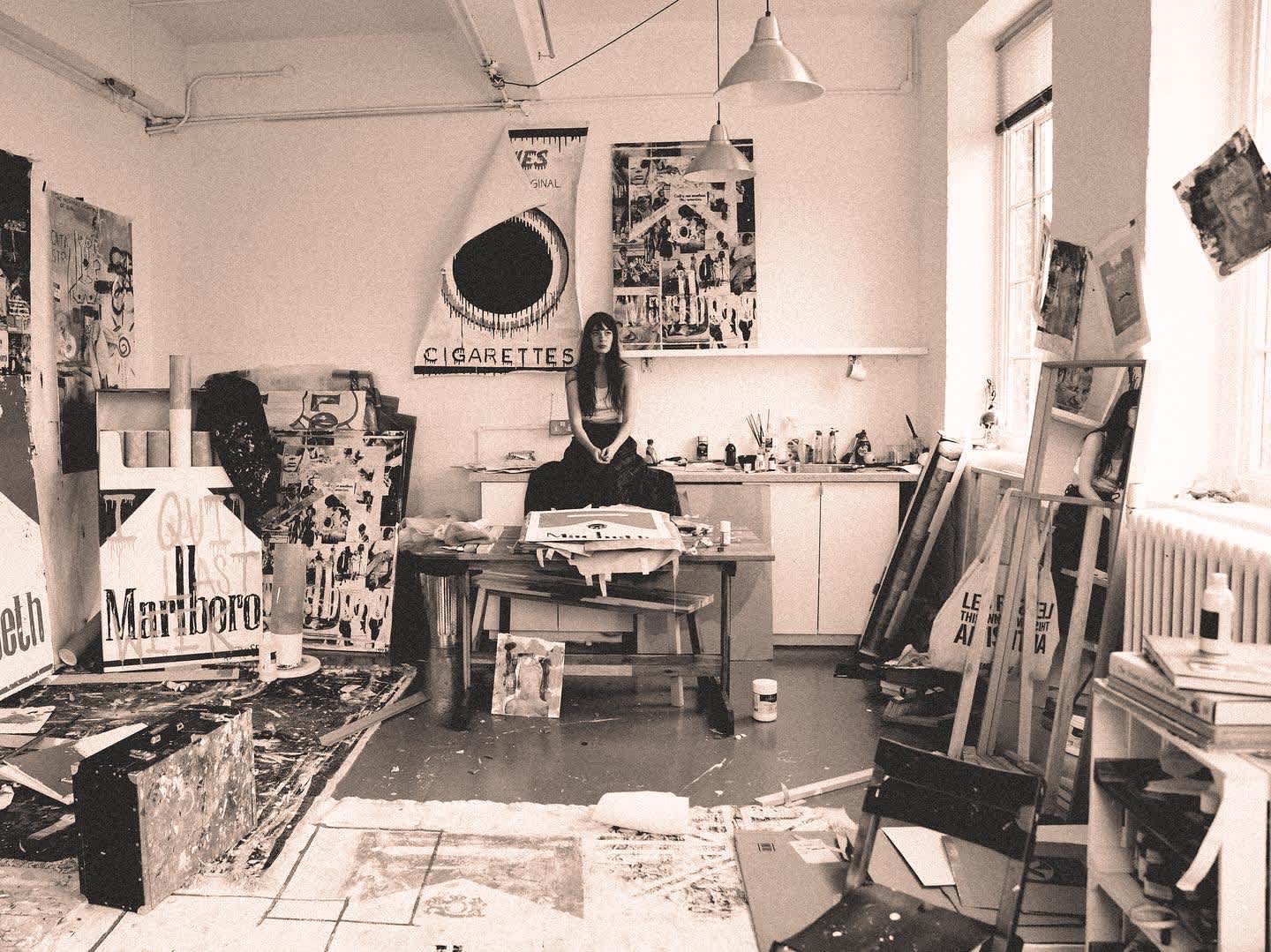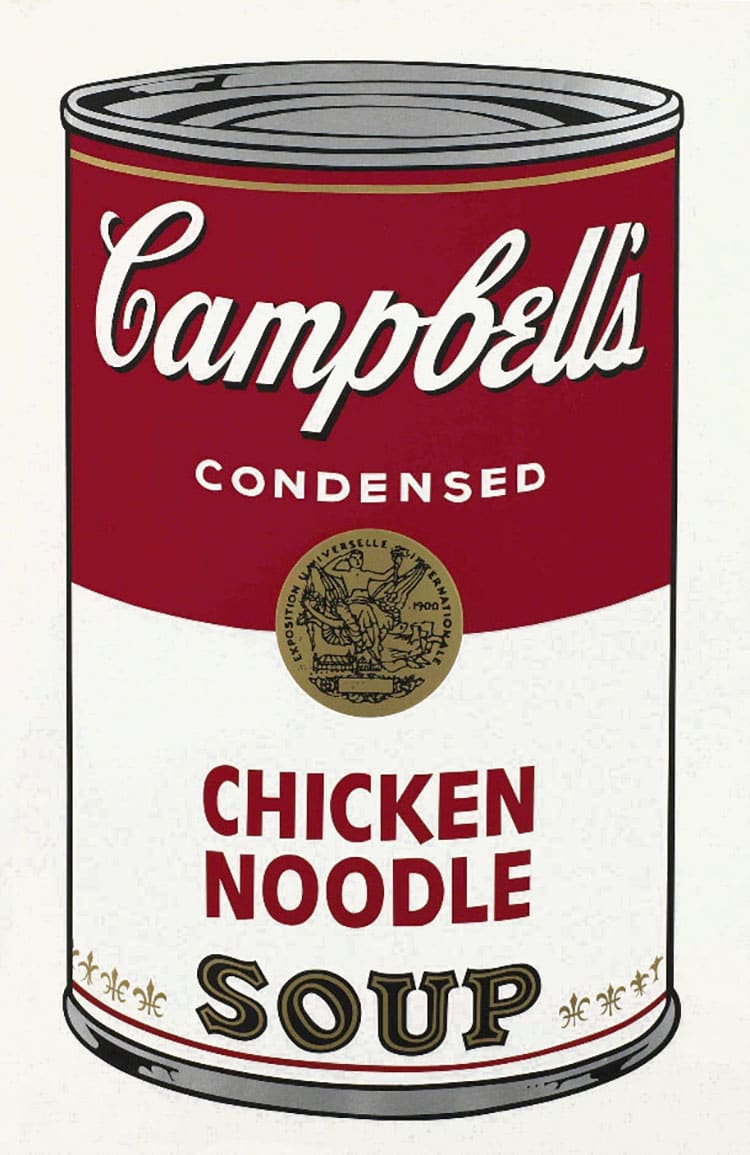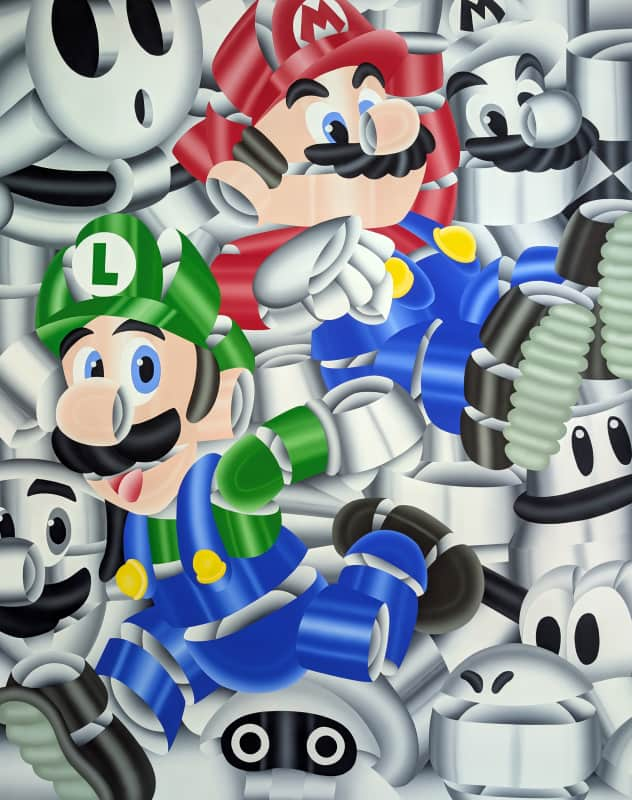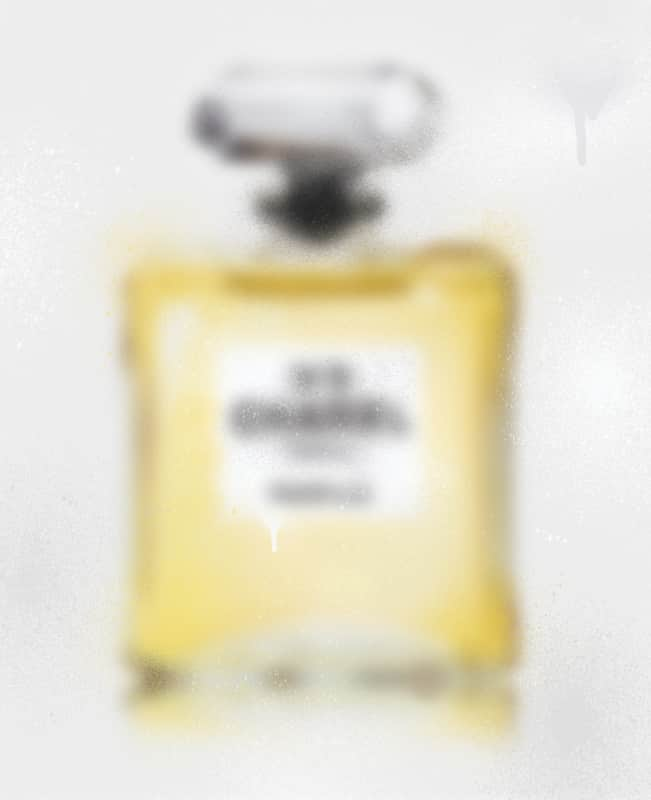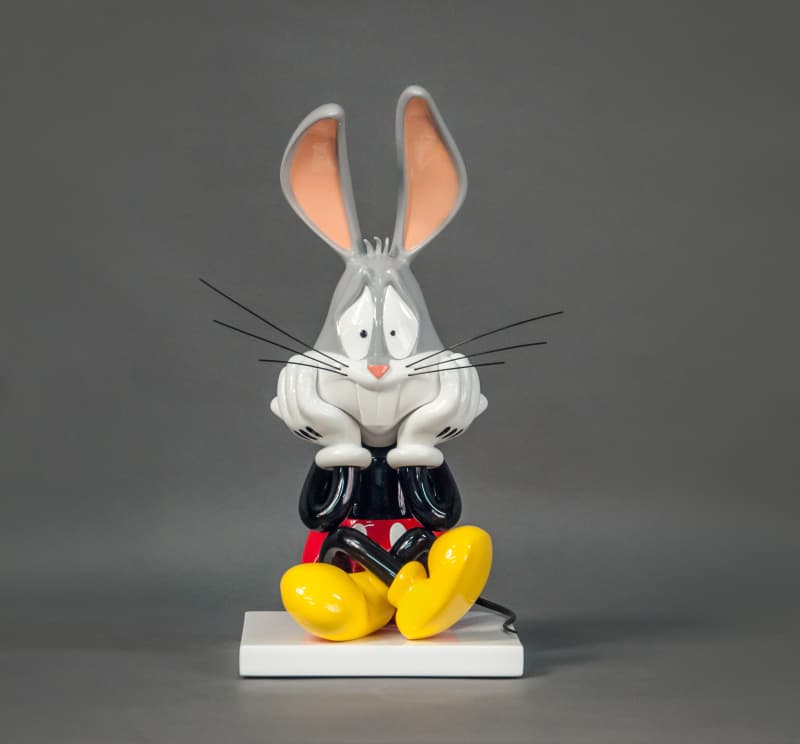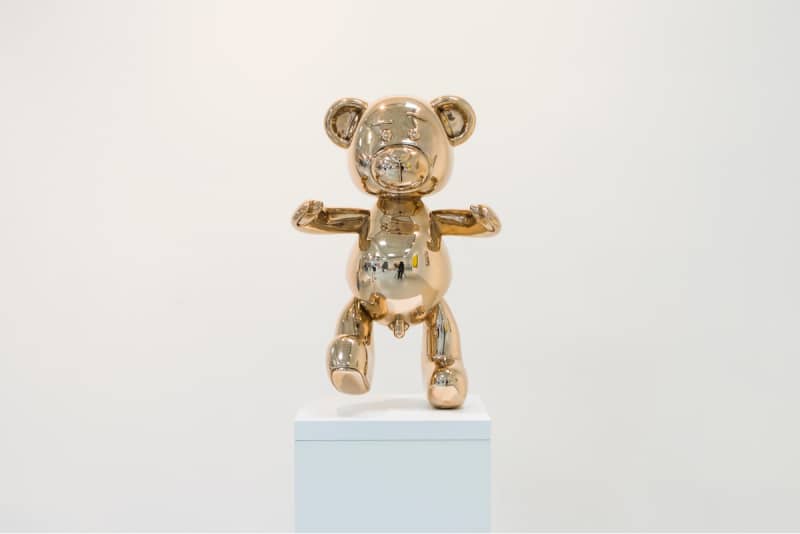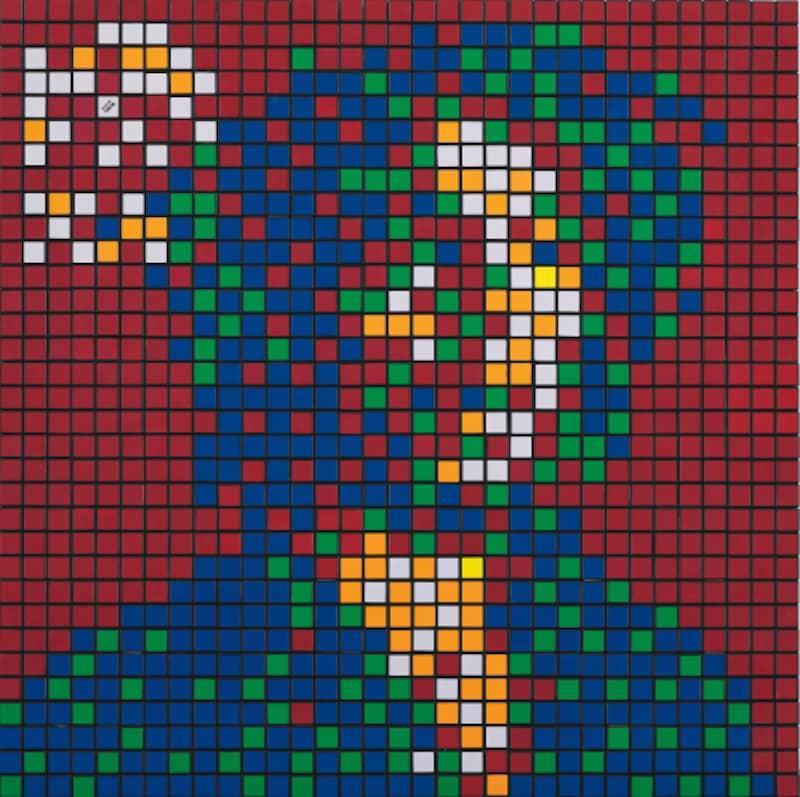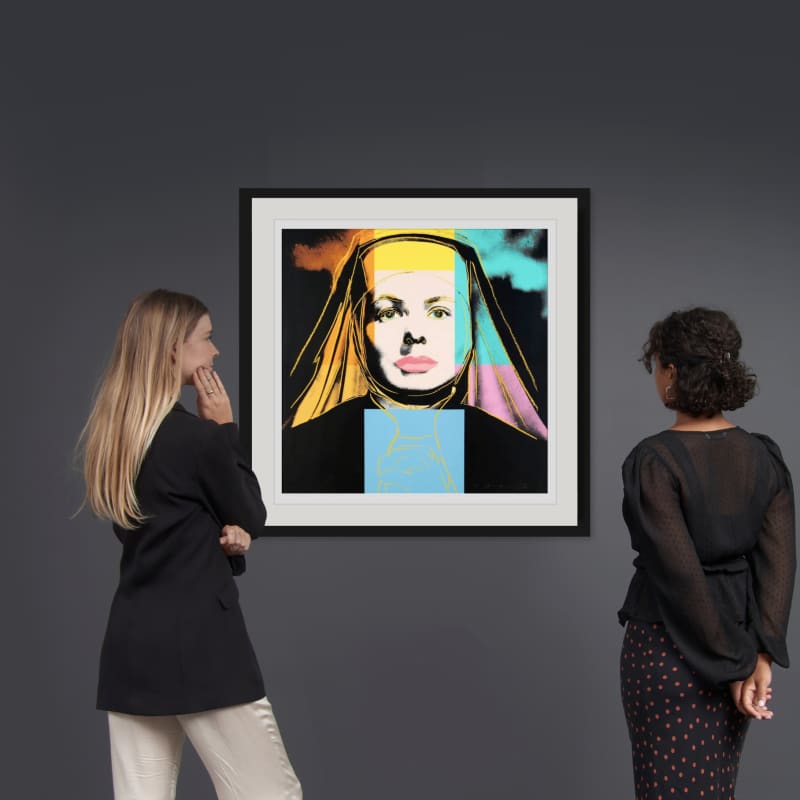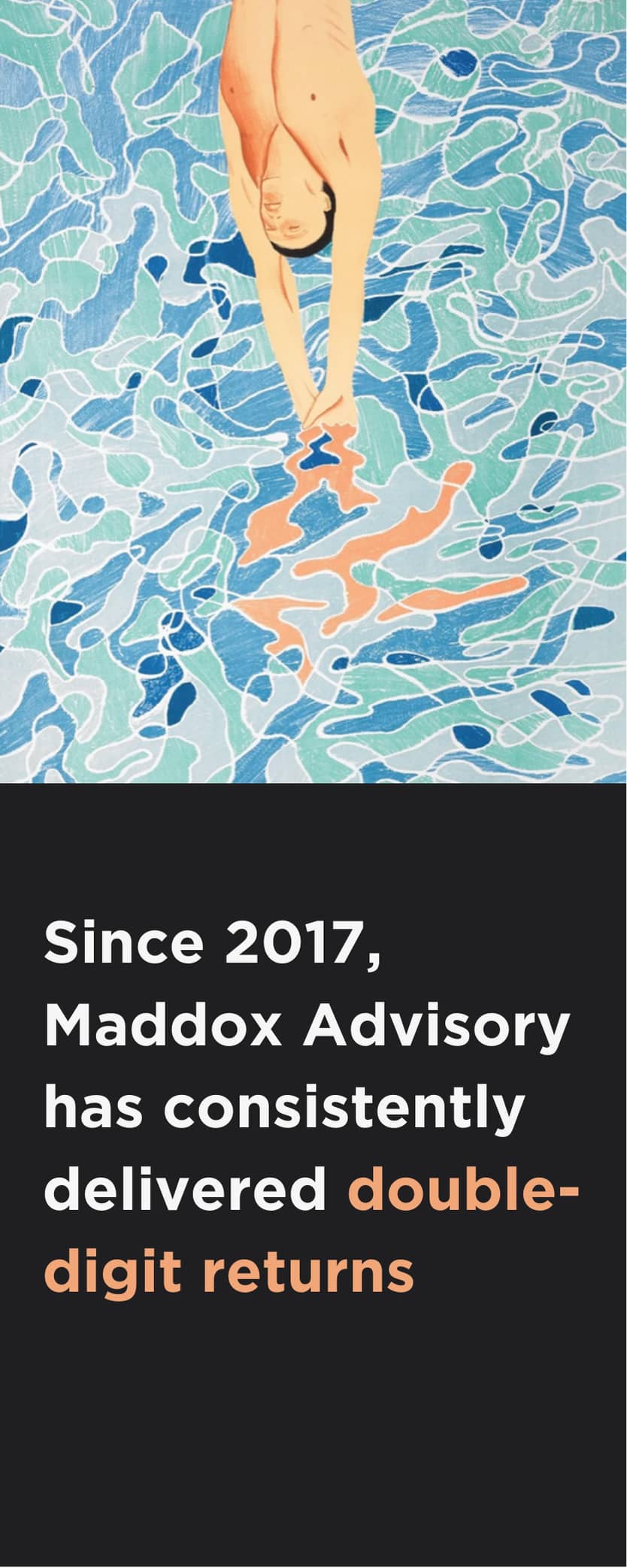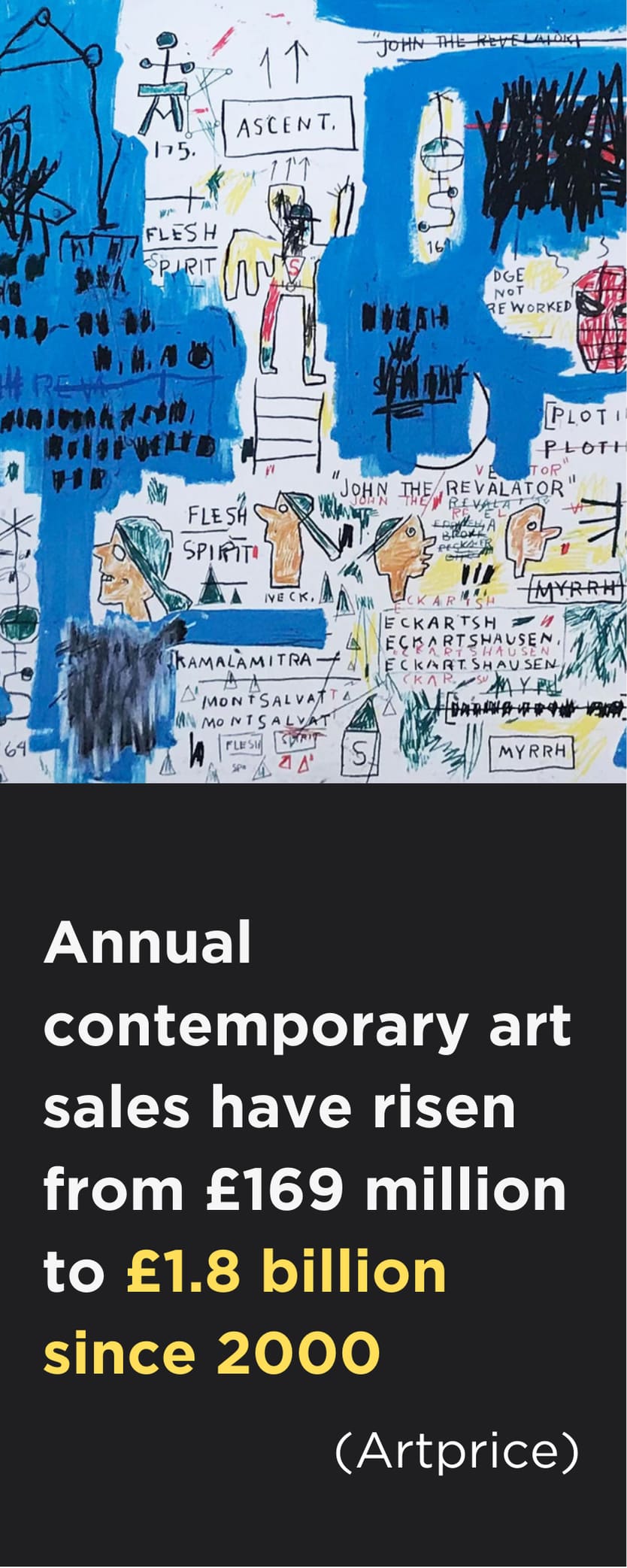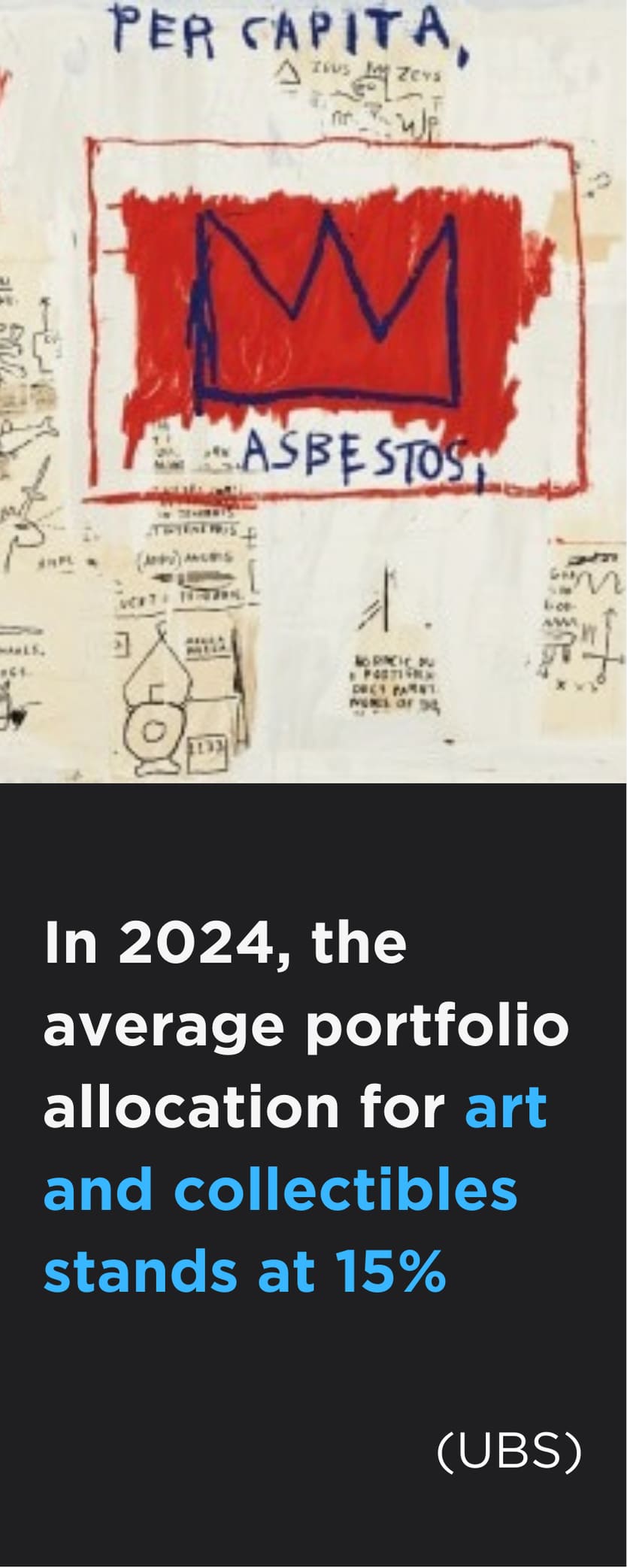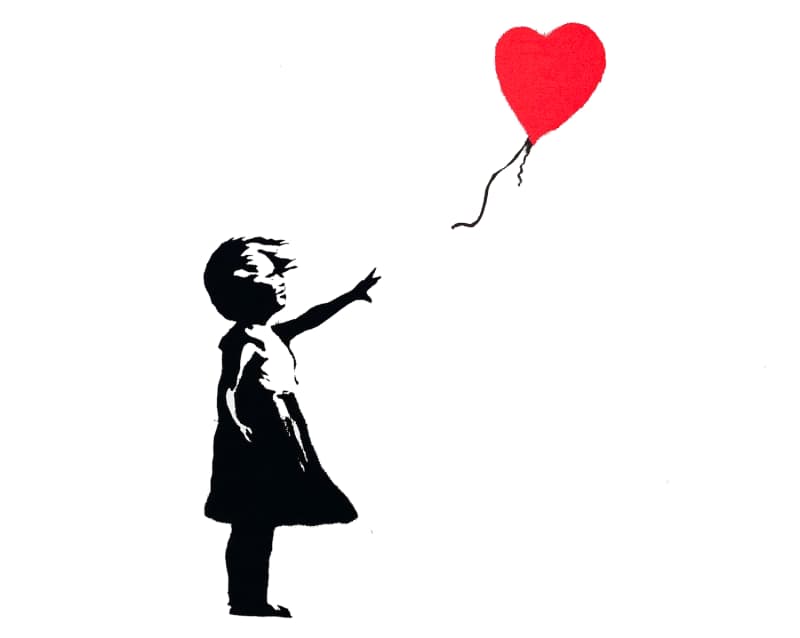Born from the collision of commerce and culture, Pop art held a mirror to the rise of mass media and celebrity obsession. Now, in an era defined by screen time, branding and endless image reproduction, a new generation of modern pop art artists is taking that legacy into fresh terrain. These are not just echoes of Warhol and Lichtenstein. They’re artists creating new Pop art in every sense: sharp, self-aware and deeply engaged with the visual noise of the digital age.
Bold, iconic and endlessly collectible, Pop art remains one of the most recognisable and relevant movements in modern art. But what happens when its once-radical commentary becomes the culture it set out to critique? Welcome to the world of Pop art now, where nostalgia meets nuance and image overload meets artistic insight.
Pop Art Origins: From Soup Cans to Celebrity Culture
Warhol's Chicken Noodle Soup, 1968, Edition of 250
The original wave of Pop art artists burst onto the scene in the 1950s and 60s,, challenging traditional fine art by embracing the language of the everyday, from advertising and comics to packaging and fame. Artists like Andy Warhol, Roy Lichtenstein, Richard Hamilton and Claus Oldenburg turned consumer goods and celebrities into high art, using repetition, flat colour and irony to hold a mirror up to post-war mass media culture.
At its core, early Pop art was a commentary on mass production, celebrity obsession and the rise of consumerism in the West. It was bright, bold and instantly digestible—sometimes playful, sometimes emotionally distant, but always provocative.
60 Years On: Modern Day Pop Artists Don’t Just See Mass Culture. They Live It
Fast forward six decades and we’re now fully immersed in the world that Pop art once satirised. Celebrity is currency, brands define personal identity and imagery is not just abundant. Thanks to the internet, it’s infinite. In a culture driven by screens, memes, algorithms and personal branding, the Pop art conversation has evolved.
Enter the new Pop art: a genre still steeped in iconic imagery, cultural critique and bold visuals, but with a sharper, more mindful edge. The modern Pop art style remixes not just products and personalities, but the very structure of mass media itself.
7 Contemporary Pop Art Artists Redefining the Movement Today
Blending irony, nostalgia and media-savvy critique, these seven current Pop art artists are pushing Pop art into bold new territory.
1. Hard Edges & Soft Icons: Geoffrey Bouillot’s Remix of the Modern Pop art Lexicon
Artist Geoffrey Bouillot with his piece Monopoly Dreams
Based in Tokyo, the French artist Geoffrey Bouillot brings a refined, minimalist edge to contemporary Pop art. His sleek, predominantly monochromatic portraits transform familiar pop culture icons into stylised, machine-like figures. Each work is meticulously handmade yet echoes the cold uniformity of industrial production, a deliberate contradiction at the heart of his practice.
Bouillot’s subjects—deconstructed cartoon characters, childhood mascots and cultural icons—appear as if assembled on a production line. Stripped of softness and rendered in clean, mechanical forms, they prompt a quiet unease: are we looking at individuals or mass-produced identities? His work questions the visual language of nostalgia and commodification in an age where everything is filtered, branded and endlessly replicated.
This tension between human gesture and mechanical finish is especially evident in his series for Maddox Gallery, where pop icons including Pinnochio, Winnie the Pooh and Mario and Luigi are reimagined as artefacts of a culture overwhelmed by consumption. Already gaining traction across Europe and Asia, Geoffrey Bouillot is quickly becoming a favourite among collectors drawn to clean aesthetics with conceptual depth.
2. Gloss & Grit: Charlotte Rose Flips Mass Media Tropes to Reclaim the Feminine
Artist Charlotte Rose in her studio
Charlotte Rose is a British artist whose work sits at the intersection of visual art, literature and cultural critique. With a background in creative writing and a former career in fashion modelling, she brings a layered, deeply personal perspective to her paintings, one that interrogates the seduction of branding and the performance of femininity within consumer culture.
Her works bristle with tension. Drawing on the aesthetic language of iconic late 20th-century cigarette advertising, Rose repurposes vintage packaging and logos that we are all familiar with, overlaying them with cutting repostes to explore how corporate narratives shape memory and desire. Her colour palette avoids the sugary tones often associated with Pop art, replacing them with a cooler, more calculated mood that underscores the unease beneath the surface.
With international shows in London, Austin and Miami, and collaborations with brands like Gucci and Coach, Charlotte Rose art is gaining serious traction. Her pieces resonate especially with younger collectors looking for art that is visually striking and culturally fluent—contemporary Pop art that speaks to the now.
3. Fame in Soft Focus: The Miaz Brothers Blur Celebrity in an Age of Image Saturation
Miaz Brothers, Royal Blue, 2022
Italian duo the Miaz Brothers, the siblings Roberto and Renato, take a radically different approach to the bold, crisp imagery traditionally associated with Pop art. Their reimagined paintings of icons, historical figures and famous artworks are rendered in soft, airbrushed layers, where edges dissolve and identifying features blur into atmospheric clouds of pigment.
Faces that are universally known—Queen Elizabeth II, Shakespeare, Van Gogh—are obscured almost to the point of abstraction. In doing so, the Miaz Brothers offer a meditative counterpoint to the hyperclarity of digital life. Where Warhol embraced repetition and surface-level immediacy, their work suggests that the true image—the one that lingers in memory—is far more elusive. The result is a form of new Pop art that feels dreamlike and philosophical, focused on reflection rather than adoration.
The Miaz Brothers’ connection to the Pop art tradition is unmistakable, but filtered through the lens of nostalgia, impermanence and the question of authenticity in a culture oversaturated with visual content. In an age where faces are constantly filtered, shared and commodified, and where artworks themselves are endlessly reposted, reprinted and reinterpreted, their work invites us to consider not just what we’re seeing, but what we remember. Are we engaging with the subject or simply the ghost of its afterimage?
Miaz Brothers art resonates with collectors who are drawn to conceptual depth, emotional subtlety and an introspective update on the original movement’s obsession with fame. As a long-term investment, their art stands out not just for its visual softness, but for its intellectual sharpness. In an era of constant visibility, the Miaz Brothers make a powerful case for what it means to look, and remember, differently.
4. Coco Dávez’s Faceless Icons: A Colourful Commentary on Celebrity in Modern Pop Art
Coco Dávez, Bob Marley, 2019, Acrylic on Canvas
Spanish Contemporary artist Coco Dávez brings a playful yet piercing clarity to the modern Pop art style with her signature faceless portraits of cultural icons. Using flat planes of vivid colour and clean, graphic outlines, she renders figures like Elvis, Muhammad Ali, The Beatles and Paddington Bear instantly recognisable, despite the absence of facial features. It’s a minimalist aesthetic with maximum impact, transforming well-known faces into vibrant silhouettes charged with cultural memory.
In many ways, Dávez picks up where Warhol left off while adding a fresh, present-day perspective. Where Warhol repeated the celebrity image to emphasise its ubiquity, Dávez removes identity altogether, inviting the viewer to project their own associations onto the figure. Her work becomes a visual game of “guess who” but also a quiet critique of how celebrity is often constructed not by the individual, but by public perception.
The facelessness is key. By stripping away the details, Dávez exposes the machinery of fame. In an era shaped by avatars, filters and branding, she asks what it means to be known, and whether we’re admiring the person or simply their persona.
Dávez’ work has appeared in exhibitions across the globe and attracted collaborations with brands in the fashion and design space, giving her broad cross-genre appeal. For collectors, a Coco Dávez faceless piece offers something strikingly accessible yet deeply thoughtful: a bold, colourful artwork that balances visual simplicity with commentary on image, identity and the ever-shifting meaning of fame.
5. Cartoon Distortions and Cultural Loops: Jerkface and the Subversive Nostalgia of His New Pop Art
Jerkface, Grey Cat, 2022, Edition of 25
New York-based artist Jerkface reimagines the golden age of animation using warped repetition and visual disruption as his tools. His canvases are packed with beloved cartoon characters—think Tom and Jerry, Mickey Mouse, Homer Simpson and Cookie Monster—caught in vibrating, almost hypnotic loops. Saturated, graphic and immediately recognisable, these figures are twisted, multiplied and fragmented until they become something entirely new.
Rooted in the visual language of early Pop art, Jerkface’s work draws on the commercial repetition and brand imagery that defined the genre’s beginnings. But where Warhol flattened soup cans, Jerkface distorts childhood figures, layering in a distinctly millennial sense of a world where media isn’t just consumed, it’s lived in.
In Jerkface art, these once-innocent characters become more than pop references, embodying a tension between affection and unease. By looping and warping them, Jerkface challenges the viewer’s relationship with nostalgia, hinting at how the media that shaped our earliest memories also defines our adult identities. Are these icons comforting reminders of a simpler time or evidence of just how deeply we've been shaped by mass media
Jerkface’s transition from street art to gallery exhibitions has given him broad collector appeal. With a style that’s playful on the surface but conceptually astute beneath, Jerkface has secured a prominent place among the contemporary Pop art artists, speaking to a generation raised on cartoons who are now ready to question what those characters really mean to them.
6. Hyperreal Icons: Joseph Klibansky’s 3D Vision of Fantasy and Reality Captures the Spirit of Pop Art Today
Joseph Klibansky, Leap of Faith, 2019, Polished Bronze Sculpture, Edition of 20
Dutch visual artist Joseph Klibansky creates sculptural works that shimmer with high-gloss perfection, blending the fantasy of cartoons with the aspirational sheen of luxury branding. His art exists in a dreamlike space where surrealism, pop culture and digital-age glamour collide, merging childhood imagination with adult desire. Inflatable animals cast in bronze, oversized cartoon characters rendered in chrome and polished surfaces that reflect as much as they conceal: Klibansky’s visual world is both fantastical and hyperreal.
His work clearly echoes the polished aesthetic of Jeff Koons, but with a twist. Beneath the playful shine lies a deeper emotional undertow—a meditation on escapism, aspiration and the blurred line between reality and illusion. In an age dominated by lifestyle branding and digital personas, Klibansky’s art explores how fantasy has become a coping mechanism and a form of identity construction.
As part of the broader language of Pop art artists today, Klibansky’s sculptures turn the volume up on surface, scale and spectacle while reflecting on what lies beneath our cultural obsession with perfection and play. His pieces are just as likely to comment on vulnerability as they are to dazzle with form, inviting viewers to consider why we’re so drawn to shiny things in the first place.
Klibansky is a dominant figure in the collectible sculpture market, with major exhibitions across Europe, Asia and the US, and a strong presence in high-end private collections. His publicly displayed works include large-scale sculptures such as Self-Portrait of a Dreamer in Amsterdam and Leap of Faith in Dubai, each a striking blend of pop surrealism and polished spectacle. For collectors seeking new Pop art with scale, presence and psychological depth, Joseph Klibansky art offers an irresistible mix of visual grandeur and cultural relevance.
7. Invader Street Art: Retro Gaming as a Metaphor for Digital-Era Invasiveness
Invader, Sunset (Gold & Blue), 2018, Screenprint on paper, Edition of 100
French street artist Invader has made a global name for himself by bringing pixelated nostalgia into the urban landscape. His signature mosaic installations featuring 8-bit characters from classic arcade games like Space Invaders, Pac-Mac and Super Mario have appeared on walls, buildings and street corners in cities across the world, from Tunisia to Nepal. Hidden in plain sight, these works act as subtle intrusions, merging playfulness with provocation.
Invader street art taps directly into the legacy of Pop art’s fascination with repetition, mass media and low-culture imagery, rebooted for the digital age. His use of early video game characters evokes a distinctly analogue nostalgia, yet the message is resolutely contemporary. In a world shaped by smartphones, surveillance and algorithmic influence, Invader uses the language of retro gaming to explore the ways in which technology has embedded itself in our daily life. As such, his “invasions” are part public artwork, part social commentary.
Many of Invader’s mosaics have become cult landmarks, with fans using an app to track sightings like a digital scavenger hunt. Some of his best-known works include mosaics in Paris, Tokyo, New York and Hong Kong, as well as a permanent installation on board the International Space Station (ISS), placed there by astronaut Samantha Cristoforetti.
A standout voice among the contemporary Pop art artists, Invader’s mosaics have transitioned from the streets to auction houses, making his work one of the few true bridges between guerrilla street art and high-end collecting. For digital-native collectors, Invader represents the perfect balance of nostalgia, innovation and critique—a creator of Pop art for the pixel generation.
What Distinguishes Today’s Modern Pop Art Artists?
Fuelled by internet culture, the new wave of modern Pop art artists have reclaimed and reframed the tools of their predecessors, drawing on memes, virality and digital overload to channel the chaos of the online world. There's a marked shift from mass-produced icons to deeply personal narratives as artists use familiar imagery to tell stories that are intimate, layered and self-aware.
No longer confined to canvas, Pop art today now thrives across media, from street murals and digital prints to sculpture and augmented reality. And while the colours remain bold and the compositions immediate, the themes run deeper: identity politics, nostalgia, emotional detachment, cultural memory and the psychological effects of constant connectivity. This evolution makes modern Pop art particularly resonant—and highly collectible. It connects with art collectors, pop culture lovers and the design conscious who are seeking work that is not only visually striking, but also culturally fluent and intellectually engaging.
Conclusion: Pop Art Today in the Age of Infinite Images
Pop art nowadays is quick-witted, culturally savvy and unafraid to play with the language of mass media, transforming it into something entirely its own. Artists like Coco Dávez, Jerkface and Invader lead a generation of modern Pop art artists who reframe cultural icons in the context of memory, identity and digital saturation. From Dávez’s faceless celebrity portraits to Jerkface’s subversive cartoon characters and Invader’s pixel mosaics scattered across the globe, their work embodies the essence of Pop art, contemporary style—bright, bold and never without deeper meaning.
That’s what makes this new era of modern art Pop art so collectible: it’s instantly accessible yet endlessly layered. From blurred fame to pixelated resistance, from gloss and branding to handcrafted critique, modern day Pop art is defining what it means to live, and make art, within the insatiable media machine.
Maddox Gallery proudly showcases and represents this new generation of modern Pop art artists, who are bold, brilliant and always one step ahead of the cultural curve.
Explore our collection of new art online, speak to a Maddox Art Advisor or visit one of our galleries to discover Pop art that speaks to now.
